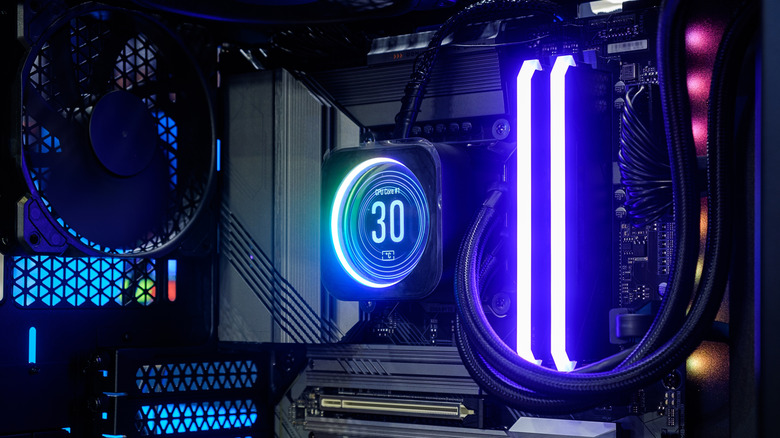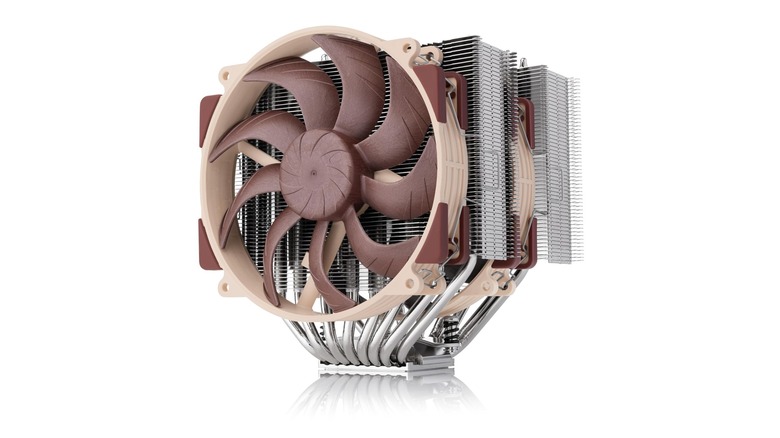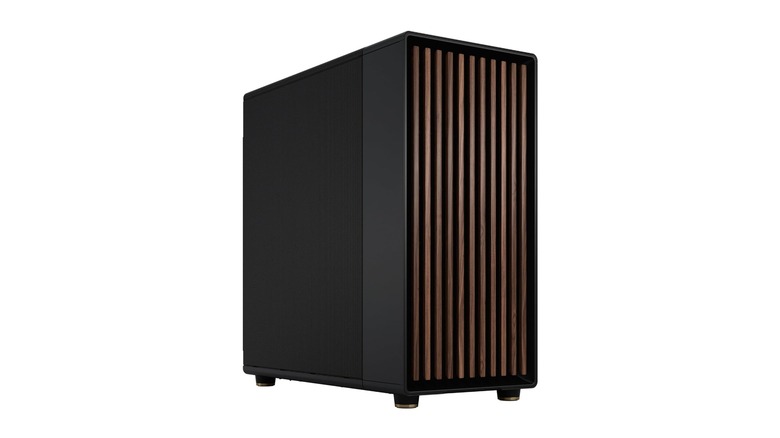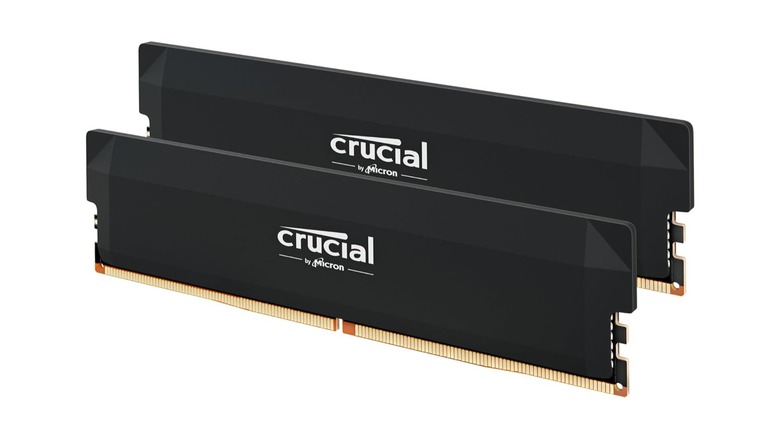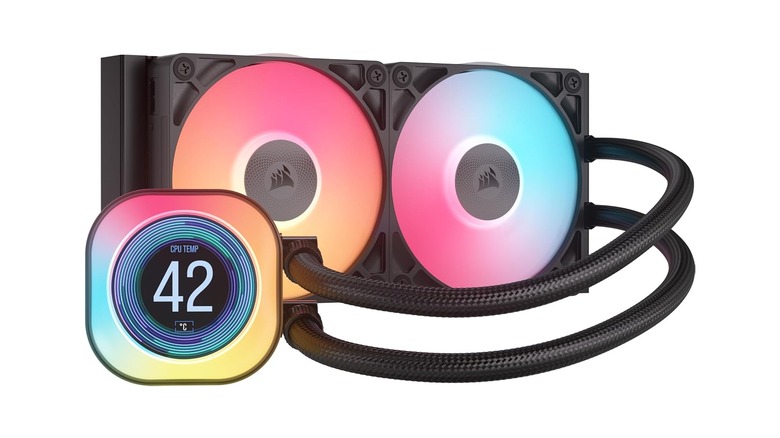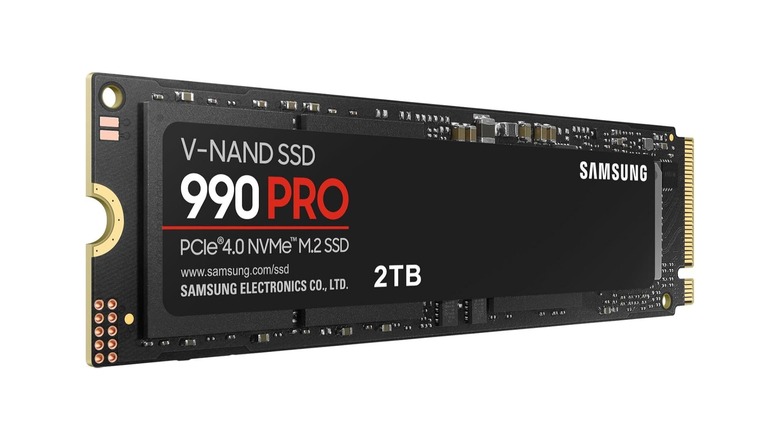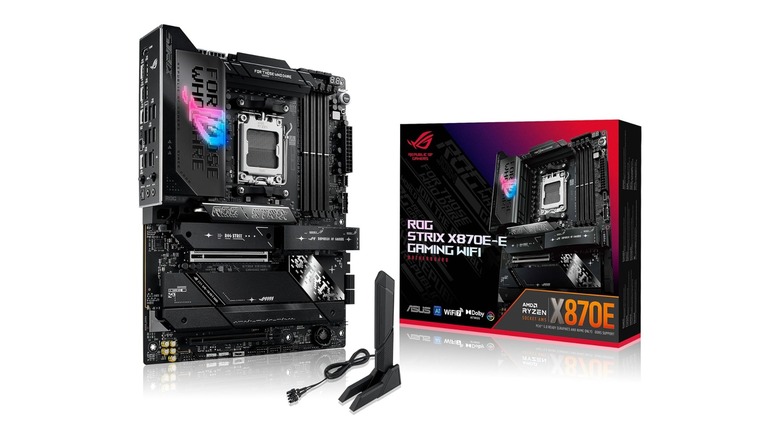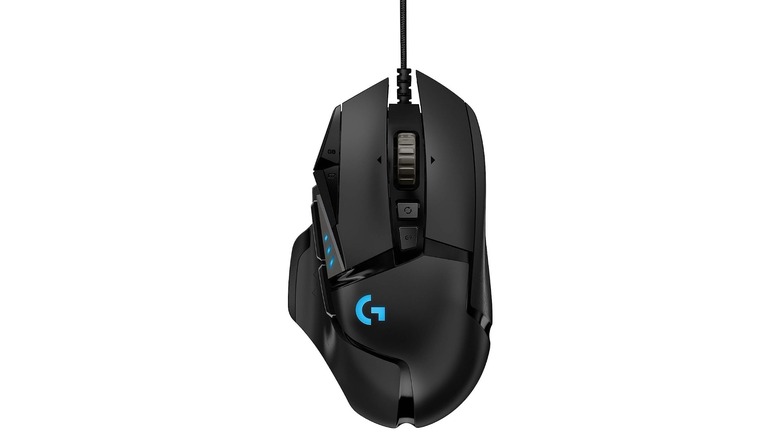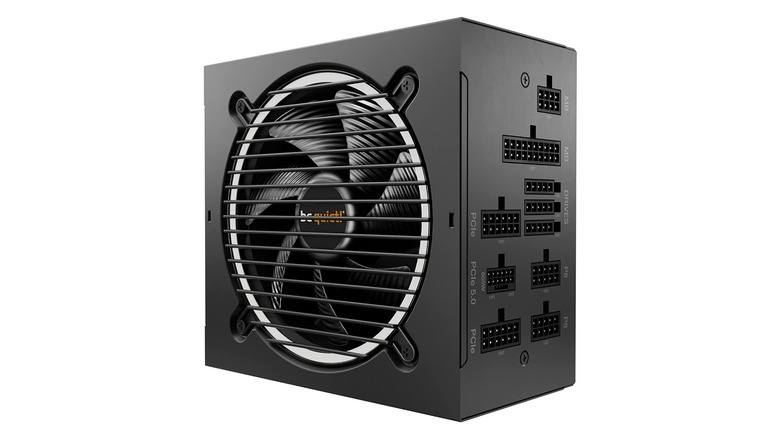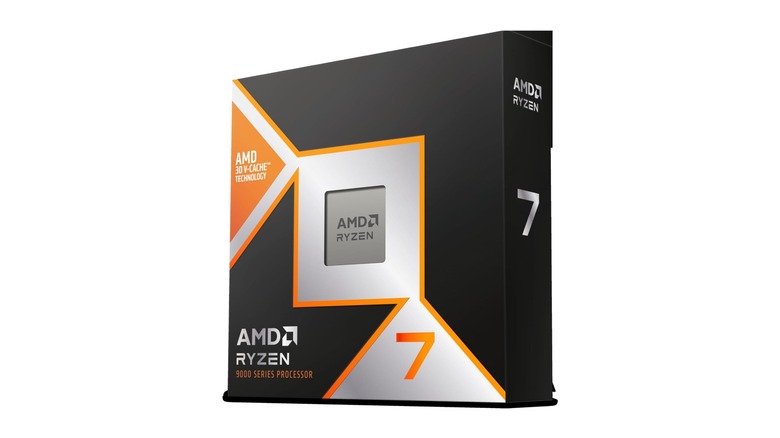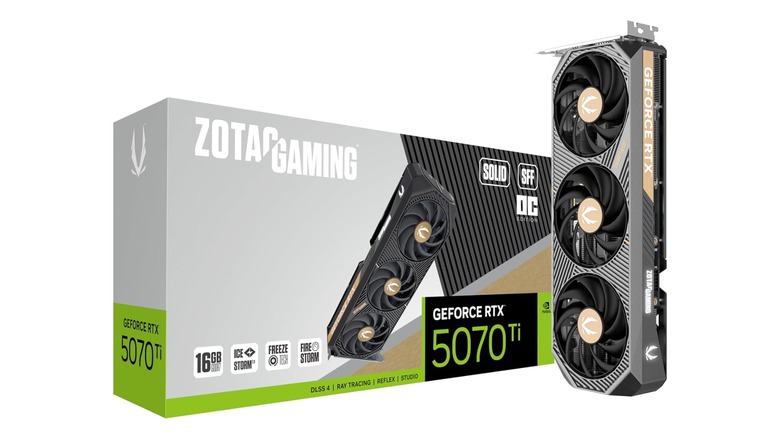3 PC Parts You Should Always Buy Used (And 7 You Shouldn't)
One of the greatest walls that keeps people from building their own PC is cost. If you just built a DIY $3K gaming PC, it's likely you overspent on various brand-new parts, especially with the constant markups above MSRP today. If you're on a particularly tight budget, cheaper brand-new components might force you to pay more down the line as they quickly become obsolete. But if you're willing to take a risk, used components can save you quite a few dollars while still providing great high-end performance.
As with any secondhand item, it can be pretty risky to buy certain components from a third-party seller. Depending on what you're buying and how much it's being sold for, buying something used for your build can work out well more often than not. But even with the most trustworthy sellers, some used components are doomed to fail. There are three PC parts that, for the most part, are perfectly fine to buy used — but there are seven others that will be far more reliable new.
Buy Used: Air Coolers
The debate of air cooling vs. liquid cooling is ever-present in the custom PC community, but air coolers are far more attractive in the secondhand market. Essentially, these are just huge slabs of metal with fans on them, so there isn't much risk of catastrophic failure that would ruin the rest of your build. At worst, the fans might not work as well as they could when brand-new, but these can be easily replaced. As long as there's no physical damage to the heatsink itself — which is far more unlikely than what other components might face — there's not much to worry about.
There isn't much harm in buying a used air cooler, but you might not need to in the first place. A high-end cooler like the Noctua NH-D15 G2 is priced at nearly $200 brand new, but many cheaper coolers can keep most processors under their temperature limits. In these cases, buying used will only save you a few dollars at most, so it might be worth pushing a few dollars higher just for complete safety and reliability. Still, the low risk of air coolers in general makes it pretty easy to save that little bit of extra money.
Buy Used: PC Cases
PC Cases are, essentially, big metal boxes that house your components. It's vital to keep everything safe, but you'll end up spending a lot if you want something bigger or loaded with features. The Fractal Design North XL is a good example, priced at over $170 owing to its E-ATX support, but it has been available in used condition for not much more than $110. You might not get much of a discount if you're already going for the best budget PC cases for your build, but we'd still recommend you take a look at the second-hand market.
Still, there are caveats. The biggest risks of a used case come from the front I/O, which includes the power button and USB ports. Motherboards usually have plenty of USB ports without the case's help, and some even include a power button that doesn't need to be hooked up to anything. The other thing to be wary of is a tempered glass side panel, which may shatter if improperly handled during shipping. Even then, companies usually make replacements for a fraction of the case's total cost, and a broken side panel won't destroy the rest of your PC as long as you're careful with the components inside.
Buy Used: RAM
RAM is volatile memory, which means nothing actually gets permanently stored on it. In other words, there's not much risk in selling a pair of working sticks to another person. And since it lacks any moving parts, it's able to handle being jostled around just fine, making it a popular component to buy secondhand. It doesn't wear down as easily as other components, especially if the previous owner didn't overclock its settings in their BIOS beyond the specially-designed XMP or EXPO profiles.
While it is possible to get a bad pair of RAM sticks from a secondhand seller, the risks aren't as problematic as you might think at first. Most RAM will come in sets of two or four, and if you opt for something with high capacity like 64GB Crucial Pro sticks, you'll still be able to run pretty much anything on your system if just one of them isn't working properly. Mislabeled memory could potentially cause stability issues, but you can usually tweak clock speeds and resolve those issues yourself with minimal performance loss. There's still some notable risk with buying used RAM, but compared to the other electronic components in your build, it's a remarkably safe purchase.
Buy New: Liquid Coolers
Although air coolers are fairly safe to buy used, liquid coolers are a different story entirely. These components include radiators, pumps, and tubing that could all either break down or leak, causing overheating problems at best and damaging the entire system with spilled coolant at worst. Some liquid coolers also include special features like the Corsair iCue Link Titan. This happens to be one of the best CPU coolers with an LCD screen, which is yet another point of failure for secondhand buyers.
Generally, liquid coolers are more expensive than air coolers, so buying a used one can knock a few bucks off your PC build. However, they're also more difficult to set up in the first place, since you need space for the radiators and the tubing. If you end up with a cooler that's already been put under stress, jostling it around while trying to fix it to your case is only going to shorten its lifespan further. There is just too much scope for trouble to recommend a second-hand liquid cooler.
Buy New: Storage Devices
As one might expect, buying used storage devices always carries the risk of leftover data from the previous owner, which could be an especially big problem if they contain sensitive or unlawful information. Even if the owners wiped everything carefully, you might be unable to use those devices as long as you'd like. Hard drives have moving parts, which makes them more damage-prone than solid-state drives with limited write cycles. Still, SSDs are not invulnerable. Even a high-capacity SSD like a 2TB Samsung 990 Pro won't last forever if data on it is constantly being added or rewritten.
If you buy a used solid-state drive, you can at least check the key warning signs that your SSD might be on its last legs. You can also check if you might have received a fake SSD, which may corrupt your data without you realizing it. Also, illegitimate drives may claim terabytes of space when they have only a few gigabytes. For something that's designed to store a lot of sensitive information, you're better off buying something brand-new.
Buy New: Motherboards
At first glance, a motherboard might not seem like a bad component to buy used. It has few, if any, moving parts and doesn't store sensitive information. But a motherboard relies on many fragile connections to work, including many exposed pins. When it comes to modern-day AMD boards, tiny pins are found in the LGA socket where the CPU is placed, and they can cause your build to fail if just one of those pins is bent or broken.
Many of these motherboards come with covers to protect CPU socket pins, but these are often discarded after use. Without that cover, a used high-end motherboard like the ROG Strix X870E is completely at the mercy of shipping trucks and packaging. This isn't such a problem for older motherboards with PGA sockets, as the pins are found on their compatible processors instead. But the most powerful desktop processors today all rely on LGA sockets, limiting your options if you want something reliable and future-proof.
Buy New: Peripherals
It should go without saying why keyboards and mice shouldn't be bought used. They're used, worn, and hold a lab's worth of DNA. Also, because of how many moving parts they have, they're more likely to get damaged if shipped in amateurish packaging. A decently reliable mouse like the Logitech G502 Hero might still work just fine even after heavy use, though you'll likely have to contend with the previous owner's dirt and grime.
As for other items, your mileage may vary. There are pros and cons to used gaming monitors, for instance. Dead pixels and burn-in are both possibilities that a seller may have omitted, honestly or dishonestly. Headphones and chairs are also likely to show wear and tear, making them a dubious second-hand purchase.
Buy New: Power Supplies
There is almost never a good time to purchase a used power supply. These send power to your entire system while housing highly volatile technology. In worst-case scenarios, a failing power supply can damage components and even cause fires. They're usually designed to last five to 10 years, but you simply won't know how much care a second-hand power unit has received.
Another thing to worry about is whether the power supply includes its own cables. Modular PSUs like the be quiet! BN513 use specialized cables to connect components. While cables from different power supplies might look identical, many users have reported that they are not designed to be swapped, causing them to fry whatever they power. It's hard to tell if the cables you receive are the same ones that originally came with a used PSU, making it one of the few used components that could endanger your entire PC build.
Buy New: CPUs
A computer's processor is arguably the heart of the whole system — not just in function, but in how delicate it can be, too. Older CPUs that still use their own pins can be massively damaged from a simple drop on the floor, causing them to face crashes and immense slowdowns without any chance of recovery. CPUs that lack pins like the Ryzen 9 9800X3D aren't as likely to face such catastrophic failure, but it's still a small component that can suffer other forms of physical damage. Without decent packaging, even something like static electricity can turn a working processor into an inert silicon slab.
There are other concerns when buying a used CPU. Degradation has been a noteworthy issue with processors, especially if they were overclocked beyond their limits in the past. Additionally, some used sellers have been sending out the wrong processors to buyers in what can only be described as a complete scam. Like SSDs, fake processors have infiltrated the secondhand market, and unfortunately, those two aren't the only ones.
Buy New: Graphics Cards
These days, you might not be able to find a decent price for a graphics card unless it's used. A brand-new Zotac 5070 Ti is priced far above the card's MSRP, which can make it feel like more of a scam than a secondhand purchase. But if you go for a used seller, you might not even get the right card at all, with their extreme popularity making them easy targets for false labelling. It doesn't help that modern-day cards are often just as expensive in the secondhand market, and sometimes even priced higher due to low stock.
Older cards are less likely to be outright scams, and they're often able to provide much better value while still handling themselves well in modern games. But if you're already aware of what to look for when buying a used GPU, you'll know to check if the cards have been used for cryptocurrency mining or other stressful tasks. Unfortunately, you won't be able to tell how much use it was really put through outside of seeing how dusty or physically harmed it might be. Even then, it could just stop working one day without any clear indication as to why.
Today, buying an older used graphics card isn't always a bad idea, owing to new cards' sky-high prices. But if that's the route you want to take, you'll need to follow it with as much scrutiny as you possibly can.
